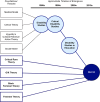Empowering Disabled Voices: A Practical Guide for Methodological Shifts in Biology Education Research
- PMID: 39172964
- PMCID: PMC11440741
- DOI: 10.1187/cbe.24-02-0076
Empowering Disabled Voices: A Practical Guide for Methodological Shifts in Biology Education Research
Abstract
Biology education research provides important guidance for educators aiming to ensure access for disabled students. However, there is still work to be done in developing similar guidelines for research settings. By using critical frameworks that amplify the voices of people facing multiple forms of marginalization, there is potential to transform current biology education research practices. Many biology education researchers are still in the early stages of understanding critical disability frameworks, such as Disability Critical Race Studies (DisCrit), which consists of seven tenets designed to explore the intersecting experiences of ableism and racism. Our Research Methods Essay uses DisCrit as a model framework and pulls from other related critical disability frameworks to empower disabled voices in biology education research. Drawing from existing scholarship, we discuss how biology education researchers can design, conduct, and share research findings. Additionally, we highlight strategies that biology education scholars can use in their research to support access for participants. We propose the creation and sharing of Access and Equity Maps to help plan-and make public-the steps researchers take to foster access in their research. We close by discussing frequently asked questions researchers may encounter in taking on critical frameworks, such as DisCrit.
Figures

Similar articles
-
A call to action for disability and rehabilitation research using a DisCrit and Disability Justice framework.Disabil Rehabil. 2024 Jul;46(14):3189-3195. doi: 10.1080/09638288.2023.2242780. Epub 2023 Aug 22. Disabil Rehabil. 2024. PMID: 37605564
-
Models of Disability as Research Frameworks in Biology Education Research.CBE Life Sci Educ. 2024 Sep;23(3):ar8. doi: 10.1187/cbe.24-01-0026. CBE Life Sci Educ. 2024. PMID: 39190673 Free PMC article.
-
Confronting the Legacy of Eugenics and Ableism: Towards Anti-Ableist Bioscience Education.CBE Life Sci Educ. 2024 Sep;23(3):es7. doi: 10.1187/cbe.23-10-0195. CBE Life Sci Educ. 2024. PMID: 39074120 Free PMC article.
-
Literature Reviews, Theoretical Frameworks, and Conceptual Frameworks: An Introduction for New Biology Education Researchers.CBE Life Sci Educ. 2022 Sep;21(3):rm33. doi: 10.1187/cbe.21-05-0134. CBE Life Sci Educ. 2022. PMID: 35759629 Free PMC article. Review.
-
Intersectionality Within Critical Autism Studies: A Narrative Review.Autism Adulthood. 2022 Dec 1;4(4):281-289. doi: 10.1089/aut.2021.0014. Epub 2022 Dec 13. Autism Adulthood. 2022. PMID: 36777375 Free PMC article. Review.
References
-
- Annamma, S. A. (2017). Disrupting cartographies of inequity: Education journey mapping as a qualitative methodology. In: Critical Race Spatial Analysis, 35–50. Routledge.
-
- Annamma, S. A., Cabral, B., Harvey, B., Wilmot, J. M., Le, A., & Morgan, J. (2024). When we come to your class … we feel not like we’re in prison”: Resisting Prison-School’s Dehumanizing and (De)Socializing mechanisms through abolitionist praxis. American Educational Research Journal, 61(1), 3–47. 10.3102/00028312231198236 - DOI
-
- Annamma, S. A., Connor, D., & Ferri, B. (2013). Dis/ability critical race studies (DisCrit): Theorizing at the intersections of race and dis/ability. Race Ethnicity and Education, 16(1), 1–31. 10.1080/13613324.2012.730511 - DOI
-
- Annamma, S. A., Ferri, B. A., & Connor, D. J. (2018). Disability critical race theory: Exploring the intersectional lineage, emergence, and potential futures of DisCrit in education. Review of Research in Education, 42(1), 46–71. 10.3102/0091732X18759041 - DOI
-
- Annamma, S. A., & Morrison, D. (2018). DisCrit classroom ecology: Using praxis to dismantle dysfunctional education ecologies. Teaching and Teacher Education, 73, 70–80. 10.1016/j.tate.2018.03.008 - DOI
MeSH terms
LinkOut - more resources
Full Text Sources
Medical

